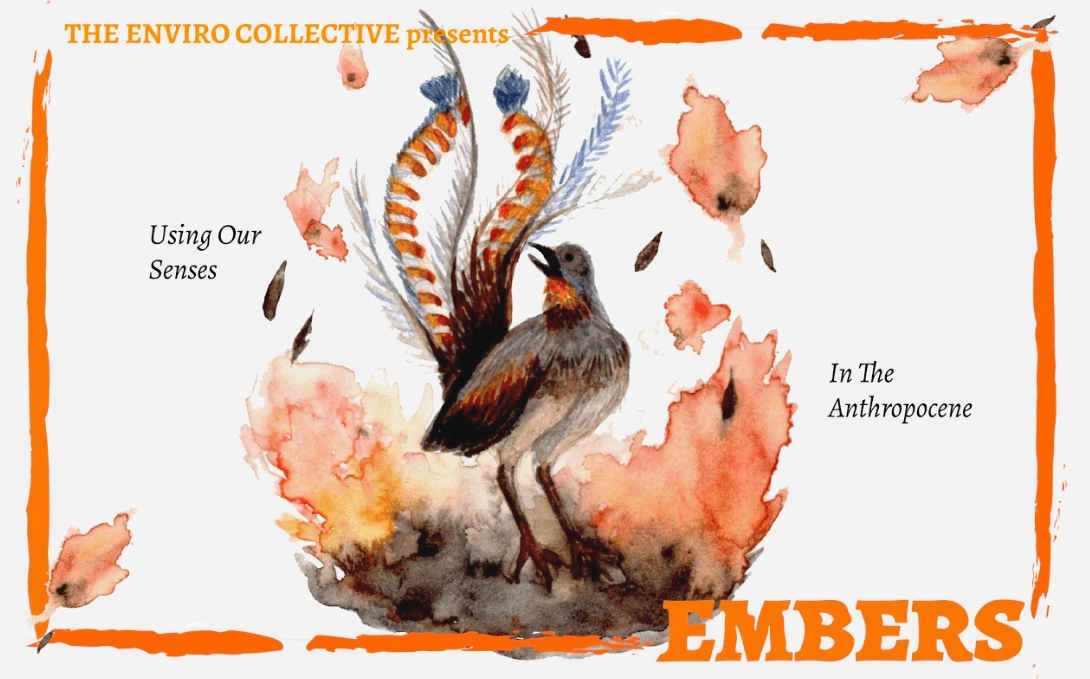During the late 18th to early 20th century, when Western artists and travellers saw a landscape that pleased them, they would turn their backs from the scene to observe it through a pocket-sized mirror. One of the first users of the Claude glass fell backwards and broke his knuckles, unwilling to tear his eyes from the beauty he saw in the reflection. This anthropocentric use of the senses — where looking and listening have the effect of separating us from the world — is quintessential to Western relations to nature. By reducing landscapes to a picturesque scene subdued in the palm of an onlooker’s hand, the Claude glass provided precedent to the ecological emergencies of today.
The illusion that humans are central to existence stems from a form of sensory perception that is manifest in the Claude glass; nature is perceived to be dominated for our own use. This has led to what is called the Anthropocene, a word that comes from the Ancient Greek ‘anthropo,’ meaning human; it proposes that the most recent period in earth’s geological history has been shaped primarily by human activity. Some argue that this began during the Industrial Revolution, others say with the testing of the first atomic bombs. What is resoundingly clear is that human activities have accelerated species extinction, left an irreversible trace on the geological record, and catastrophically increased levels of carbon dioxide in the atmosphere.
The Anthropocene might implicate all of humankind in one sweep, but it is not all humans who are damaging the planet. It is fossil fuel companies and capitalism’s constant drive for accumulation and growth. Adani, for example, has been violating the ancestral lands of the Wangan and Jagalingou people for coal mining profit. These companies want you to believe your carbon footprint is causing the climate crisis rather than their exploitative practices. We must remember that Indigenous people protect 80% of the world’s biodiversity even though they make up less than 5% of the population. Recognising that it is not merely human activity but a profit-oriented structure that is leaving a mark on the earth, Jason Moore has proposed the alternative term Capitalocene, emphasising capitalism as a way of organising nature. Furthermore, Donna Haraway has argued for a third term, the Chthulucene, to signify how the human and non-human are linked in ‘tentacular practices,’ urging us to seek multi-species kinship.
Whichever term we may use, the destructive effects of human activities is a sensory phenomenon, perceptible in the experience of living in an increasingly diminished and dangerous world. During the ‘black summer’, it was the unavoidable presence of smoke around us; the heaviness and itchiness of our lungs served a constant reminder of unimaginable loss. For those living in areas where the fires tore through, this was followed by an anxious silence — that of birdsong. While some birds were able to escape the fires, much of their habitat and the insects they feed on were destroyed. The lyrebird which has survived for 15 million years, with its distinct song and ability to imitate almost any sound, is now under threat of becoming permanently silent.
The Anthropocene has a profound influence on the mix of sounds that can be heard. Different natural environments have evolved their own ‘acoustic ecologies’ where all the sounds of different species fit together harmoniously like an orchestra. Sound-making is a way of forming relations with other living creatures and territorialising space. It is a type of symbolic communication that has been dismissed by the narrative of human exceptionalism. In the Western philosophical tradition, our supposedly singular possession of language places us on a pedestal, and this has had perilous consequences.
Human activities cause disruptions to avian soundscapes both by submerging nature’s orchestra beneath the noise of machinery and by driving species extinctions. The resultant absence of birdsong — a sound that flitters between human and non-human worlds — leads to feelings of anxiety and loss. The encroaching silence of the non-human is symptomatic of the epoch we live in, where catastrophic blazes can wipe out more living beings than we have the ability to conceive of. Listening to the sounds and silences of nature’s orchestra, without intruding, is a way of reconfiguring human ecological relations, of seeking out multi-species kinship.
The spiritual way of deep listening and still awareness is embodied in Dadirri, a word from the Ngangikurungkurr language. Miriam-Rose Ungunmerr, an Elder from the Nauiyu Community, Daly River, Northern Territory, articulates that :
Dadirri recognises the deep spring that is inside us. We call on it and it calls to us. This is the gift that Australia is thirsting for…Our people have passed on this way of listening for over 40,000 years…To be still brings peace – and it brings understanding.
There is a responsibility learnt from listening deeply with the intention to act. Instead of turning our backs to nature and looking at it through a mirror of our own, we must listen and look closely at how human activities on this continent, since colonialism, have disrupted the environment. Then, we must transform this knowledge gained through our senses into an imperative for collective action.





